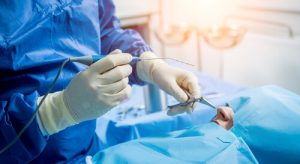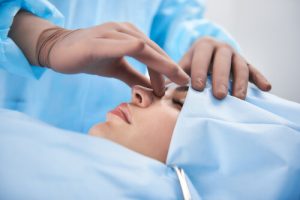In the realm of cosmetic medicine, rhinoplasty, commonly known as a “nose job,” stands out as one of the most popular procedures. The operation, which entails modifying the nose’s shape and structure, often results in profound transformations beyond physical appearances, influencing individuals’ self-perception and confidence. This article delves into the fascinating journey of a nose job before and after , offering a comparative view of the process and outcomes. We will guide you through each stage, discussing the consultations, physical exams, preparation, procedure, and all the way to post-operative care and recovery. Join us as we explore the transformative journey that a nose job entails, aiming to provide you with an in-depth understanding of this exceptional procedure.
Understand the Nose Job Procedure
Undergoing a rhinoplasty procedure, more commonly known as a “nose job “, is a significant decision that involves careful planning and preparation. Here are some things to expect before, during, and after the procedure
Before the Surgery
- Consultation Your doctor will discuss your expectations, review your medical history, and explain the procedure in detail. They may also take photographs of your nose from different angles for planning the and comparing before and after results.
- Physical Exam This is necessary to determine your overall health status and any potential risks during . This might include lab tests, a nasal exam (checking the skin and the inside of your nose), and possibly a computerised tomography (CT) or magnetic resonance imaging (MRI) scan.
- Preparation You might be asked to avoid certain medications that can increase bleeding, such as aspirin, nonsteroidal anti-inflammatory drugs (NSAIDs), and certain herbal supplements. If you are a smoker, you’ll be asked to stop smoking as it can delay healing.
During the Surgery
- Anaesthesia Most nose jobs are performed under general anaesthesia, so you’ll be asleep during the operation. However, in some cases, local anaesthesia with sedation might be used.
- Procedure The procedure usually involves making cuts within the nostrils. In some cases, cuts are made across the base of the nose. The doctor then reshapes the inner bone and cartilage to produce a more pleasing appearance.
After the Surgery
- Recovery Room After , you’ll be in a recovery room, where the medical staff will monitor your vital signs. You might feel dizzy or nauseous from the anaesthesia.
- Post-Operative Care You’ll likely have a nasal splint or packing inside your nostrils for support during the initial healing process. You might have to wear this for one to two weeks.
 Swelling and Bruising Expect moderate swelling and some bruising around your eyes for several days, which might gradually improve over two weeks.
Swelling and Bruising Expect moderate swelling and some bruising around your eyes for several days, which might gradually improve over two weeks.- Follow-Up Appointments You’ll have follow-up visits with your doctor to check your progress and to remove stitches and the splint.
- Results The final shape of your nose will be apparent after it has completely healed. This might take up to a year.
Remember, each person’s experience with a rhinoplasty can be different, and this is just a general guide. Always discuss any questions or concerns with your doctor.
Discuss Costs and Benefits
Undergoing a rhinoplasty, or a “nose reshaping,” is a significant personal and financial decision. The procedure is a long-term investment in your appearance and self-confidence, but it’s crucial to understand the financial implications involved.
Financial Implications
- Cost of Surgery The average cost of a rhinoplasty in Australia was between $5,000 and $10,000. This price includes the professional fee of the cosmetic doctor, hospital or surgical facility costs, anaesthesia fees, and medications. It’s important to note that the charge may vary depending on your location, the doctor’s experience, and the complexity of the procedure.
- Additional Costs These could include pre- medical tests, post- garments, and any follow-up visits or revision surgeries that may be necessary.
- Insurance In most cases, health insurance does not cover cosmetic medical procedures like nose jobs. However, if the is done for medical reasons, such as to correct breathing problems or deformities resulting from trauma or birth defects, some or all of the cost may be covered. You should check with your health insurance provider to determine what is covered.
Potential Aesthetic Results
- Improved Facial Harmony A well-performed rhinoplasty can enhance facial balance by creating a more proportional nose. This can greatly improve your appearance and make you feel more confident in your looks.
- Correct Structural Issues A nose procedure can correct various structural issues, such as a nasal airway obstruction, a hump on the bridge, a bulbous nose tip, or an asymmetrical nose, resulting in a more aesthetically pleasing appearance.
- Enhanced Self-Confidence Looking good often leads to feeling good. The aesthetic improvements from a nose job can significantly boost self-esteem and self-confidence, positively affecting your social and professional life.
 When weighing the financial implications against the possible aesthetic results, it’s essential to consider your personal values, financial situation, and aesthetic goals. Nose surgery is a personal decision, and what might be worth it to one person might not be the same for another. Consult with a board-certified nose doctor for a personalised cost estimate and discuss the potential results based on your specific needs and goals.
When weighing the financial implications against the possible aesthetic results, it’s essential to consider your personal values, financial situation, and aesthetic goals. Nose surgery is a personal decision, and what might be worth it to one person might not be the same for another. Consult with a board-certified nose doctor for a personalised cost estimate and discuss the potential results based on your specific needs and goals.
Recover Quickly
While everyone’s recovery from a rhinoplasty, or “nose job,” can vary, there are several tips you can follow to help speed up the process and ensure a smooth healing period
- Follow Your Doctor’s Instructions This is perhaps the most critical part of your recovery. Your doctor will provide you with specific post-operative care instructions. Following these guidelines in the letter will help speed up your recovery and prevent complications.
- Take Prescribed Medication Pain relief medication and antibiotics may be prescribed by your doctor. Use them as directed to manage discomfort and prevent infection.
- Use Ice Packs Applying cold compresses or ice packs around (not directly on) your nose can help to reduce swelling and numb mild pain. However, do not use ice packs for more than 15-20 minutes at a time and always wrap them in a towel to avoid frostbite.
- Stay Hydrated and Maintain a Healthy Diet Good nutrition can significantly impact your healing process. Stay hydrated and eat nutrient-dense foods to give your body the energy it needs to heal.
- Keep Your Head Elevated Especially during sleep, keeping your head elevated can help reduce swelling. Use multiple pillows or a specially designed wedge pillow to prop up your head.
- Avoid Strenuous Activities Give your body a break for at least a few weeks after . Avoid heavy lifting, intense workouts, and any other activities that could increase your blood pressure and lead to swelling or bleeding.
- Don’t Blow Your Nose As tempting as it might be, particularly if you feel congested, avoid blowing your nose for the first few weeks after , as it can disrupt healing.
- No Smoking and Alcohol Both can impede your recovery process. Smoking can slow down healing and increase the risk of complications, while alcohol can increase swelling.
- Wear Button-Up Shirts To avoid accidentally hitting your nose, wear shirts that button up in the front rather than those that pull over your head.
- Sun Protection Protect your nose from the sun for the first few months after , as it can cause discolouration and prolonged swelling. When outside, use a hat and high-SPF sunscreen.
Remember, the key to a successful recovery is patience. Healing takes time, and rushing the process can lead to complications and less satisfactory results. Always consult your doctor or healthcare provider for any concerns during your recovery.
Monitor Your Results
Determining the success of a rhinoplasty, or “nose job”, involves tracking changes in appearance over a significant period. Here are some steps to consider
- Preoperative Documentation Before the , it’s essential to document the nose’s appearance from multiple angles. This could include high-quality photographs and possibly computer simulations of the expected outcome. This will provide a basis for comparison post-.
- Immediate Post-operative Period In the days following the , expect some level of swelling, bruising, and possible asymmetry. These are normal parts of the healing process and do not indicate the final result.
- Short-term Follow-up (2-3 Weeks Post-) Any external sutures and nasal splint should have been removed by this point. While a significant portion of the swelling will have diminished, the nose will continue to look somewhat puffy, and the final result may not be evident yet.
- Intermediate Follow-up (3-6 Months Post-) During this period, most of the swelling should have subsided. You’ll start to have a better idea of the final result, but minor changes can continue to occur.
- Long-term Follow-up (1 Year Post-) A year after the , most, if not all, of the swelling should be gone, revealing the outcome of the . At this point, you and your doctor can thoroughly evaluate the results.
Key factors to evaluate in determining the success of the nose job include
 Nasal Symmetry Is the nose symmetrical and in harmony with the rest of the facial features?
Nasal Symmetry Is the nose symmetrical and in harmony with the rest of the facial features?- Proportion Are the size, nasal tip, and shape of the nose in harmony with the rest of your face?
- Functional Improvement Has breathing improved if the nose job was done to correct a physiological issue like a deviated nose septum?
- Patient Satisfaction Ultimately, are you, the patient, happy with the results of your surgical procedure? Do you feel more confident and comfortable with your appearance?
Remember, while some patients might see the desired results in a few months, others might take up to a year or more. Regular follow-ups with your doctor are crucial in tracking progress and addressing any concerns that might arise during the healing process. Patience and realistic expectations are key to a satisfying outcome.
References
https://www.mayoclinic.org/tests-procedures/rhinoplasty/about/pac-20384532
https://my.clevelandclinic.org/health/treatments/11011-rhinoplasty
https://www.cosmetic.org/cosmetic-procedures/rhinoplasty/animation
https://www.ncbi.nlm.nih.gov/pmc/articles/PMC6993297/
https://utswmed.org/medblog/rhinoplasty-nose-job/
https://academic.oup.com/asj/article/36/1/NP1/2613974
https://www.healthline.com/health/cosmetic-/liquid-rhinoplasty


 Swelling and Bruising Expect moderate swelling and some bruising around your eyes for several days, which might gradually improve over two weeks.
Swelling and Bruising Expect moderate swelling and some bruising around your eyes for several days, which might gradually improve over two weeks. Nasal Symmetry Is the nose symmetrical and in harmony with the rest of the facial features?
Nasal Symmetry Is the nose symmetrical and in harmony with the rest of the facial features?